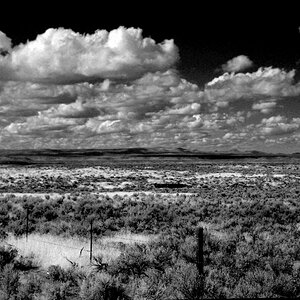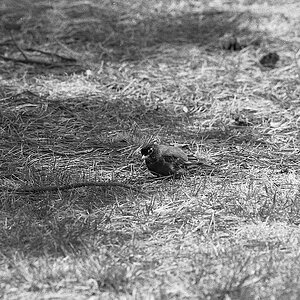Hey, I'm new to the forum; this would be my first post. I got a digital camera (a PowerShot A530) about a year ago...but I've become increasingly frustrated with the seemingly random pattern of pictures being blurry. I am very new to this and haven't really sought any help with my picture-taking until now, so I really know next to nothing about even some of the simplest aspects of the camera, but this just really irritates me the most. Besides the obvious of moving the camera too much, what else could cause pictures to turn out blurry? Does it have to do with lighting? Could there be some settings I unknowingly turned on? Just really anything that could cause blurry pictures; there doesn't seem to be any pattern to what turns out alright.
Navigation
Install the app
How to install the app on iOS
Follow along with the video below to see how to install our site as a web app on your home screen.

Note: This feature currently requires accessing the site using the built-in Safari browser.
More options
You are using an out of date browser. It may not display this or other websites correctly.
You should upgrade or use an alternative browser.
You should upgrade or use an alternative browser.
What are a few things that can cause pictures to be blurry?
- Thread starter bob rulz
- Start date
- Joined
- Feb 1, 2004
- Messages
- 34,813
- Reaction score
- 822
- Location
- Lower Saxony, Germany
- Can others edit my Photos
- Photos NOT OK to edit
Heya Bob, welcome to ThePhotoForum.
Methinks you would need to read up something about photography and the basics on how a camera works under which circumstances to understand more about taking photographs in general.
What if we start to toss about words such as aperture, shutter speed, focal length etc about you and you haven't got a clue?
In very short: the lens has an opening, a little hole. And like our pupil in the eye can adapt to the light around us by dilating or becoming small, so can the lens (to certain extents, and depending on the model of camera you use).
When the "hole" (aperture) is wide open, it lets in a lot of light. The NUMBER shown is a SMALL one though. So WIDE open is SMALL number.
When the hole (aperture) is very small, the number is HIGH, and the amount of light let into the camera is - self-evidently - smaller.
When the aperture is wide, you can only get a small portion of the (naturally) 3-dimensional scene before you in focus. The rest will blur.
When the aperture is small, you can get a much larger portion of the (naturally) 3-dimensional scene before you in focus.
When the aperture is wide and there is a lot of light, the camera only needs a tiny amount of time to let in enough light to get a picture, so your shutter speed becomes VERY fast.
When the aperture is small and there is enough light, it still takes longer to bring about a well-exposed picture because fewer light can travel inside at one time.
Assuming you use your camera on AUTO-mode, it will adapt to all light situations all by itself. Which means as soon as there is not too much light, it will a) go wide open (decrease the range where things appear sharp, i.e. are in focus), and - if necessary - b) use long shutter speeds which make handholding a photo impossible.
So you will either get blurriness from out of focus things, or from camera shake.
With many compact cameras such as the Powershots, you can only get as close as about 70 cms to an object to still get a sharp picture. Anything closer is too close. But you can change the settings to so-called "macro" indicated by a flower symbol on the back of the camera. That will then open the lens wide and give you more range to take close-up. Without those settings, though, all close-ups will turn out blurry.
I think I have picked out SOME reasons why photos can become blurry now, haven't I? Hope it was a first help, and other than that ... well, Google is your friend ("aperture", "shutter speed") and books on photography are, too.
Methinks you would need to read up something about photography and the basics on how a camera works under which circumstances to understand more about taking photographs in general.
What if we start to toss about words such as aperture, shutter speed, focal length etc about you and you haven't got a clue?
In very short: the lens has an opening, a little hole. And like our pupil in the eye can adapt to the light around us by dilating or becoming small, so can the lens (to certain extents, and depending on the model of camera you use).
When the "hole" (aperture) is wide open, it lets in a lot of light. The NUMBER shown is a SMALL one though. So WIDE open is SMALL number.
When the hole (aperture) is very small, the number is HIGH, and the amount of light let into the camera is - self-evidently - smaller.
When the aperture is wide, you can only get a small portion of the (naturally) 3-dimensional scene before you in focus. The rest will blur.
When the aperture is small, you can get a much larger portion of the (naturally) 3-dimensional scene before you in focus.
When the aperture is wide and there is a lot of light, the camera only needs a tiny amount of time to let in enough light to get a picture, so your shutter speed becomes VERY fast.
When the aperture is small and there is enough light, it still takes longer to bring about a well-exposed picture because fewer light can travel inside at one time.
Assuming you use your camera on AUTO-mode, it will adapt to all light situations all by itself. Which means as soon as there is not too much light, it will a) go wide open (decrease the range where things appear sharp, i.e. are in focus), and - if necessary - b) use long shutter speeds which make handholding a photo impossible.
So you will either get blurriness from out of focus things, or from camera shake.
With many compact cameras such as the Powershots, you can only get as close as about 70 cms to an object to still get a sharp picture. Anything closer is too close. But you can change the settings to so-called "macro" indicated by a flower symbol on the back of the camera. That will then open the lens wide and give you more range to take close-up. Without those settings, though, all close-ups will turn out blurry.
I think I have picked out SOME reasons why photos can become blurry now, haven't I? Hope it was a first help, and other than that ... well, Google is your friend ("aperture", "shutter speed") and books on photography are, too.
Well, thanks for the help! It's certainly a start. I knew the basics of aperture and shutter speed, but that probably describes it better than I knew (like I said, I'm pretty new to this...). Basically what I'm getting out of that is if it's darker out, the picture has more of a chance to turn out blurry? Would that explain why a lot of my night photos seem to be blurry?
At the same time, I have a few clear night ones (or at least it appears so) and still plenty of blurry ones in relatively good lighting conditions. I was already planning on buying a basic photography book...I'm sure you photo experts get this quite a lot, but effectively using a digital camera is quite a bit more complicated than it seems at first.
Should I post a few pictures? It seems that some close-up pictures have turned out fine (although most of them haven't; close ups aren't really my main concern at this point, I knew most of them would be blurry. But yet I still have a few that are fine.)
I haven't used my camera that much for having had it for a year, because it's generally done what I want it most for (brilliant landscape and weather pictures, almost exclusively in daylight). I also haven't really gone and sought out pictures much yet. But I mostly haven't used it much because i haven't been able to figure it out, haha. But then there's some that seem to turn out blurry and others under seemingly similar lighting conditions that are perfectly fine. I knew lighting was a part of it (since most of my night pics are blurry), but I know there's still got to be more to it.
At the same time, I have a few clear night ones (or at least it appears so) and still plenty of blurry ones in relatively good lighting conditions. I was already planning on buying a basic photography book...I'm sure you photo experts get this quite a lot, but effectively using a digital camera is quite a bit more complicated than it seems at first.
Should I post a few pictures? It seems that some close-up pictures have turned out fine (although most of them haven't; close ups aren't really my main concern at this point, I knew most of them would be blurry. But yet I still have a few that are fine.)
I haven't used my camera that much for having had it for a year, because it's generally done what I want it most for (brilliant landscape and weather pictures, almost exclusively in daylight). I also haven't really gone and sought out pictures much yet. But I mostly haven't used it much because i haven't been able to figure it out, haha. But then there's some that seem to turn out blurry and others under seemingly similar lighting conditions that are perfectly fine. I knew lighting was a part of it (since most of my night pics are blurry), but I know there's still got to be more to it.
- Joined
- Feb 1, 2004
- Messages
- 34,813
- Reaction score
- 822
- Location
- Lower Saxony, Germany
- Can others edit my Photos
- Photos NOT OK to edit
When your camera arrived, I am sure it arrived in a box with all the additional things, such as USB-connection cable, software to load your photos into the computer and --- the camera manual!?!?!?!?
Well, that is a MUST-READ for all users of new cameras (or new gadgets in their lives, anyway). I hate to read manuals, and I know that many others do, too. But it is a MUST-READ! No doubt.
That booklet alone should help you get to know your camera so much better that it begins to be FUN using it.
And yes. Every camera (in its normal settings) is designed to produce good photos in normal light under normal circumstances. Landscapes would fall into that category of "very normal".
Nighttime and indoors photography do NOT. They are a speciality, and you will need to know some more about that speciality to then produce proper photos in such special light situations.
Close-ups are another speciality, and once you start reading your manual (doing practical test shots as you go along for some instant feedback, maybe?), you will begin to understand more and consequently ENJOY things more.
For to try and get only blurry shots must be frustrating to the max... so work against that frustration by reading. Start with the manual.
Well, that is a MUST-READ for all users of new cameras (or new gadgets in their lives, anyway). I hate to read manuals, and I know that many others do, too. But it is a MUST-READ! No doubt.
That booklet alone should help you get to know your camera so much better that it begins to be FUN using it.
And yes. Every camera (in its normal settings) is designed to produce good photos in normal light under normal circumstances. Landscapes would fall into that category of "very normal".
Nighttime and indoors photography do NOT. They are a speciality, and you will need to know some more about that speciality to then produce proper photos in such special light situations.
Close-ups are another speciality, and once you start reading your manual (doing practical test shots as you go along for some instant feedback, maybe?), you will begin to understand more and consequently ENJOY things more.
For to try and get only blurry shots must be frustrating to the max... so work against that frustration by reading. Start with the manual.
bill04
TPF Noob!
- Joined
- Oct 2, 2007
- Messages
- 76
- Reaction score
- 0
- Can others edit my Photos
- Photos OK to edit
There is a small sensor in a digital camera. It's like film, but it's not film. When you press the button to take a picture the shutter opens inside the lens to let light hit the "film" (sensor). The more light that comes in, the brighter the picture is. When the shutter is open too long (((and not on a tripod where it will not move))) the picture will be blurry. You can almost say when you leave the shutter open, it becomes a video camera... except every part of the scene is on one non-moving frame. It will record every movement the camera makes including the tiniest vibration caused by uncontrollable hand movements.
If it's dark you need a tripod, unless you use a flash which, of course, lets more light in the camera resulting in the shutter being open for a very short amount of time freezing the frame.
If you hold something too close to your eye, it will not focus. The camera is the same. If you hold something too close to it, the camera can't focus, therefore it'll be blurry.
If it's dark you need a tripod, unless you use a flash which, of course, lets more light in the camera resulting in the shutter being open for a very short amount of time freezing the frame.
If you hold something too close to your eye, it will not focus. The camera is the same. If you hold something too close to it, the camera can't focus, therefore it'll be blurry.
patrickt
TPF Noob!
- Joined
- Sep 22, 2007
- Messages
- 317
- Reaction score
- 3
- Location
- Oaxaca, Mexico
- Can others edit my Photos
- Photos OK to edit
Blurry pictures?
1. Camera shake -shaky hands, attacking the shutter button. Obviously, all is increased with slower shutter speeds.
2. Out of focus - With a smaller aperture your DOF is smaller and having part of your photo out of focus is easier.
3. Subject moving - everything sharp except the moving subject.
1. Camera shake -shaky hands, attacking the shutter button. Obviously, all is increased with slower shutter speeds.
2. Out of focus - With a smaller aperture your DOF is smaller and having part of your photo out of focus is easier.
3. Subject moving - everything sharp except the moving subject.
There is a small sensor in a digital camera. It's like film, but it's not film. When you press the button to take a picture the shutter opens inside the lens to let light hit the "film" (sensor). The more light that comes in, the brighter the picture is. When the shutter is open too long (((and not on a tripod where it will not move))) the picture will be blurry. You can almost say when you leave the shutter open, it becomes a video camera... except every part of the scene is on one non-moving frame. It will record every movement the camera makes including the tiniest vibration caused by uncontrollable hand movements.
If it's dark you need a tripod, unless you use a flash which, of course, lets more light in the camera resulting in the shutter being open for a very short amount of time freezing the frame.
If you hold something too close to your eye, it will not focus. The camera is the same. If you hold something too close to it, the camera can't focus, therefore it'll be blurry.
This I think is what I was looking for. Thanks!
I have read some of the manual. Granted, I haven't read it front to back, but I did read parts of it. And yes, now that I look at it all of my blurry pictures are in the dark or indoors (I didn't realize lighting conditions were so different indoors than outdoors). But I still happen to have some very close-up pictures and indoor pictures that have turned out perfectly, and I don't know exactly what I did differently in those ones to make it happen.
Most reactions
-
 428
428 -
 287
287 -
 282
282 -
 266
266 -
 222
222 -
 198
198 -
 182
182 -
 179
179 -
 164
164 -
 164
164 -
 150
150 -
 130
130 -
 120
120 -
 95
95 -
I
94
Similar threads
- Replies
- 12
- Views
- 852
- Replies
- 8
- Views
- 630
- Replies
- 18
- Views
- 1K


![[No title]](/data/xfmg/thumbnail/38/38735-2245cc1b04db3f96fa74095ae14558a6.jpg?1619738703)
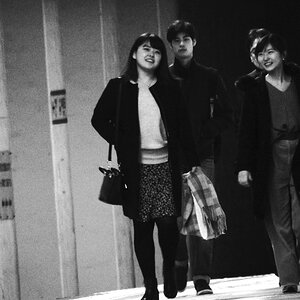
![[No title]](/data/xfmg/thumbnail/41/41778-1940e957c27e1919c300dfedbc32d1c3.jpg?1619739889)
![[No title]](/data/xfmg/thumbnail/35/35665-6506470fd930bd101375a007d572615a.jpg?1619737089)
![[No title]](/data/xfmg/thumbnail/41/41781-7dcfd2ee71d4a453b4ad9fb5c7e723f1.jpg?1619739890)
![[No title]](/data/xfmg/thumbnail/39/39511-592cbd68b1d797ffce7e41e4fbfed890.jpg?1619739066)
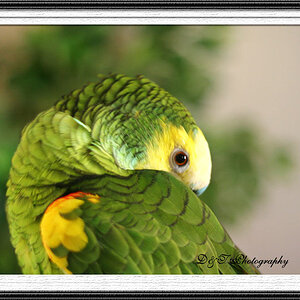
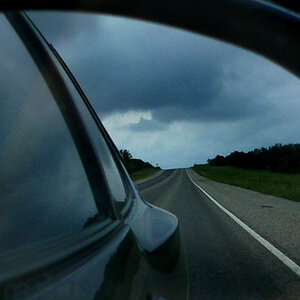
![[No title]](/data/xfmg/thumbnail/30/30884-b92cca2d3ad6f728825cf7e936e8cef6.jpg?1619734496)
